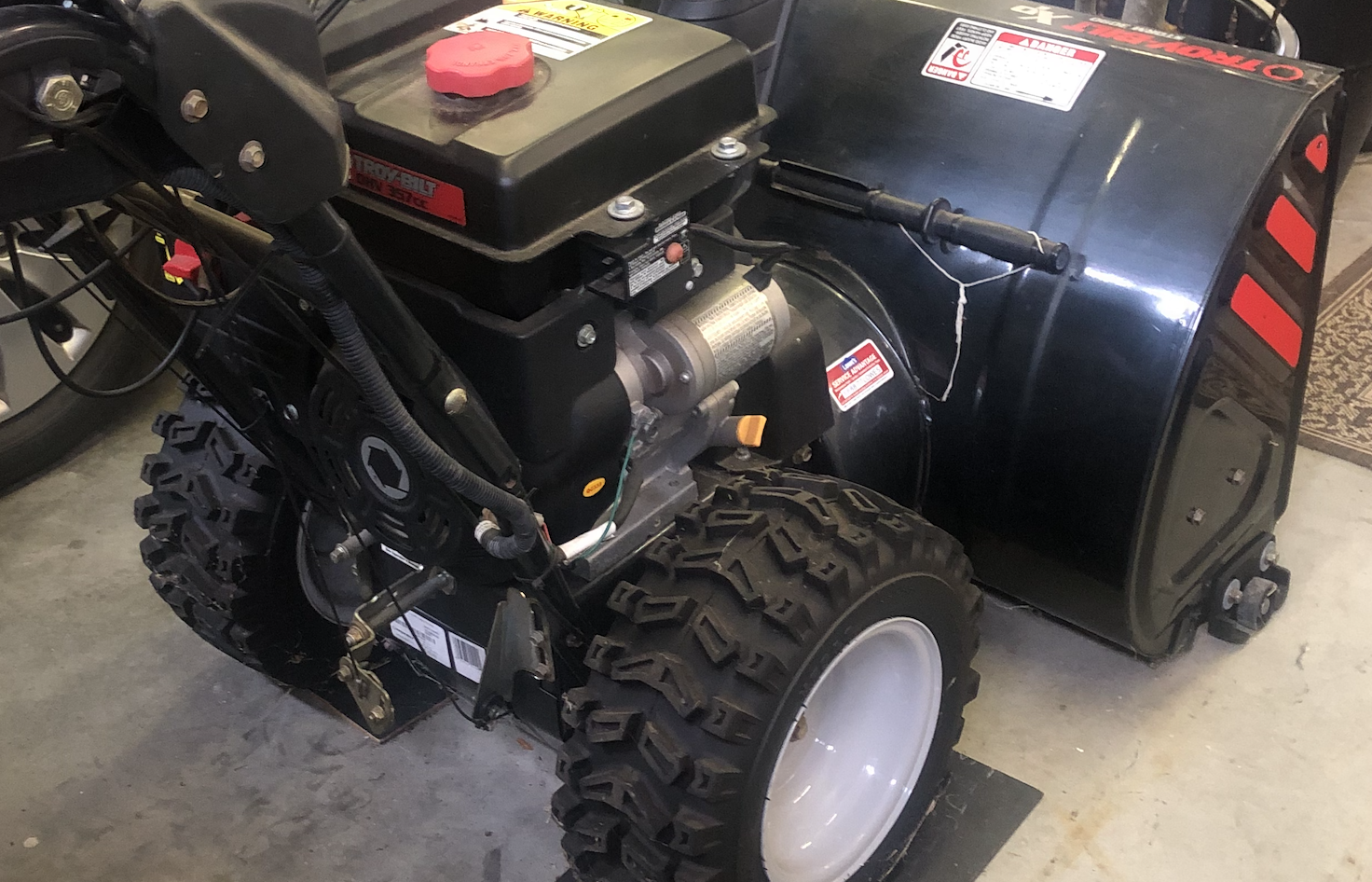If you own a Craftsman snow blower, it’s important to know how to troubleshoot common issues that may arise. Understanding the key components of your snow blower and following safety precautions are crucial before troubleshooting.
In this article, we will discuss three common issues that you may encounter with your Craftsman snow blower and provide step-by-step solutions for each problem. Additionally, we will cover regular maintenance tips and when it’s necessary to seek professional help.
Understanding Your Craftsman Snow Blower
When the winter season arrives and the snow starts falling, having a reliable snow blower can make all the difference. But before you dive into troubleshooting any issues that may arise, it’s important to familiarize yourself with the key components of your Craftsman snow blower. By understanding how each part works together, you’ll be better equipped to diagnose and fix any problems that may come your way.
The Engine: Powering Your Snow Blower
The heart of your snow blower is its engine. This powerful machine provides the necessary force to propel the auger and impeller, allowing them to efficiently clear snow from your driveway or walkway. It’s important to regularly check the engine’s oil level, air filter, and spark plug to ensure optimal performance.
The Auger: Breaking Through the Snow
Located at the front of your snow blower, the auger is responsible for breaking up the snow and ice. This rotating component features sharp blades that dig into the snow, helping to propel it towards the impeller. Regular maintenance, such as lubricating the auger shaft and inspecting the blades for any signs of wear, will keep it in top shape.
The Impeller: Throwing Snow Away
Working in conjunction with the auger, the impeller is responsible for throwing the snow out of the chute. This fan-like component creates a powerful airflow that propels the snow away from your clearing path. It’s important to inspect the impeller for any obstructions or damage, as well as ensuring that it spins freely.
The Chute: Directing the Snow
The chute is the part of your snow blower that directs where the snow is thrown. It can usually be rotated manually or electronically, allowing you to adjust the direction and distance of the snow discharge. Regularly inspecting the chute for any clogs or blockages will ensure smooth operation.
Controls: Operating Your Snow Blower
Your Craftsman snow blower is equipped with various controls that allow you to operate the machine effectively. These controls include the throttle, choke, and ignition switch. Familiarize yourself with these controls and their functions to ensure proper usage and avoid any unnecessary issues.
Prioritizing Safety: Precautions Before Troubleshooting
Before you begin troubleshooting your Craftsman snow blower, it’s crucial to prioritize safety. Always ensure that the engine is turned off and remove the spark plug wire to prevent any accidental starts. Engage the safety lockout feature, if available, and never place your hands or body near the auger or impeller when the machine is running. Taking these precautions will eliminate the risk of injury while troubleshooting and ensure a safe working environment.
Issue 1: Snow Blower Won’t Start
Possible Causes for Non-Starting Snow Blower
If your snow blower refuses to start, several potential causes could be causing the issue. These include a clogged fuel line, a faulty spark plug, or a carburetor problem. It’s essential to understand these possible causes to effectively troubleshoot and resolve the problem.
A clogged fuel line can prevent fuel from reaching the engine, resulting in a non-starting snow blower. This can happen due to debris or sediment buildup in the fuel tank or fuel filter. Over time, these blockages can restrict the flow of fuel and cause starting issues. Regular maintenance, such as cleaning the fuel system, can help prevent this problem.
A faulty spark plug can also contribute to a snow blower not starting. The spark plug is responsible for igniting the fuel-air mixture in the engine’s combustion chamber. If the spark plug is worn out or damaged, it may not generate the necessary spark to start the engine. Regularly inspecting and replacing the spark plug can help prevent this issue.
The carburetor is another component that can cause starting problems in a snow blower. The carburetor is responsible for mixing the fuel and air in the correct proportions for combustion. If the carburetor is dirty or clogged, it may not deliver the proper fuel-air mixture to the engine, resulting in a non-starting snow blower. Regular cleaning and maintenance of the carburetor can help prevent this issue.
Step-by-Step Solutions for Non-Starting Issue
To address the non-starting issue, start by checking the fuel line for any blockages. Ensure there is fuel in the tank and that the fuel shut-off valve is open. If the fuel line is clear, examine the spark plug for signs of wear or damage. Clean or replace the spark plug if necessary.
If these steps don’t solve the problem, inspect the carburetor for any issues. Remove the carburetor and clean it thoroughly, removing any dirt or debris that may be causing a blockage. Pay close attention to the small passages and jets within the carburetor, as these can easily become clogged. Once cleaned, reassemble the carburetor and reinstall it in the snow blower.
If troubleshooting and cleaning the fuel line, spark plug, and carburetor do not resolve the non-starting issue, it may be necessary to seek professional assistance. A trained technician can diagnose and repair any underlying problems that may be preventing the snow blower from starting.
Remember, regular maintenance and proper storage practices can help prevent starting issues in the future. It’s important to follow the manufacturer’s guidelines for maintenance and storage to ensure the longevity and reliable performance of your snow blower.
Issue 2: Snow Blower Not Throwing Snow Properly
Identifying the Problem with Snow Ejection
If your snow blower is not adequately throwing snow, there could be several reasons contributing to this issue. Clogs in the chute or auger, a worn-out auger belt, or improper adjustment of the discharge chute are common culprits. Identifying the problem correctly will help you resolve the issue efficiently.
When it comes to clogs in the chute or auger, it’s essential to understand how they can occur. During heavy snowfall, the snow can become compacted and form ice, leading to blockages in the chute. Additionally, if you accidentally run over a foreign object, such as a rock or a piece of wood, it can get lodged in the auger, causing a clog. These obstructions hinder the snow blower’s ability to throw snow effectively.
Another factor to consider is the auger belt. Over time, the belt can wear out due to constant use and exposure to harsh weather conditions. A worn-out auger belt can slip or break, resulting in reduced snow throwing power. Regular inspection and replacement of the auger belt are necessary to ensure optimal performance.
Furthermore, improper adjustment of the discharge chute can impede the snow blower’s ability to throw snow in the desired direction. If the chute is not aligned correctly, the snow may not be expelled far enough, causing it to accumulate in unwanted areas. Adjusting the discharge chute to the appropriate angle and direction is crucial for efficient snow ejection.
Fixing the Snow Throwing Issue
To address the snow throwing problem, start by clearing any clogs in the chute or auger. Use a sturdy stick or a long tool to carefully remove any compacted snow or ice. It’s important to exercise caution during this process to avoid damaging the chute or auger blades.
Next, inspect the auger belt for signs of wear and tear. If the belt appears frayed, cracked, or excessively worn, it’s time for a replacement. Refer to your snow blower’s manual for specific instructions on how to replace the auger belt. Remember to disconnect the spark plug wire before performing any maintenance tasks.
Once the clogs are cleared and the auger belt is in good condition, check the adjustment of the discharge chute. Most snow blowers have adjustable chute controls that allow you to change the direction and angle of snow ejection. Ensure that the chute is pointing in the desired direction and at an appropriate angle for efficient snow throwing.
By following these steps and making necessary adjustments, your snow blower should regain its snow throwing capability. Remember to perform regular maintenance and inspections to prevent future issues and ensure optimal performance during the winter season.
Issue 3: Snow Blower Running Rough or Overheating
Recognizing Signs of Overheating or Rough Running
If your snow blower is running rough or overheating, it’s crucial to identify the signs correctly. Symptoms may include unusual noises, loss of power, excessive vibrations, or excessive smoke. Recognizing these signs will help you diagnose the problem accurately.
Solutions for Overheating and Rough Running
To address overheating or rough running, start by checking the engine oil level and ensuring it’s within the recommended range. Clean or replace the air filter to ensure proper airflow. Additionally, inspect the spark plug for wear or damage and replace if necessary. Adjusting the carburetor may also help resolve the issue. If the problem persists, it’s advisable to consult a professional technician for further assistance.
Maintaining Your Craftsman Snow Blower
Regular Maintenance Tips
Proper maintenance is essential to keep your Craftsman snow blower in optimal condition. Regularly check and change the engine oil, inspect and tighten all fasteners, and lubricate moving parts as recommended by the manufacturer. Clean any debris from the auger and chute after each use to prevent clogs and ensure smooth operation. By following these maintenance tips, you can extend the lifespan of your snow blower and minimize the likelihood of encountering issues.
When to Seek Professional Help
While many troubleshooting and maintenance tasks can be done by the owner, certain issues may require professional assistance. If you are unsure about the repair process, if the problem persists despite troubleshooting efforts, or if you lack the necessary tools and expertise, it’s always recommended to seek help from a certified technician. They can provide specialized knowledge and ensure that your Craftsman snow blower is repaired correctly.
With the information provided in this article, you now have a comprehensive understanding of troubleshooting common issues with your Craftsman snow blower. By following the step-by-step solutions and practicing regular maintenance, you can keep your snow blower running smoothly and efficiently throughout the winter season.

